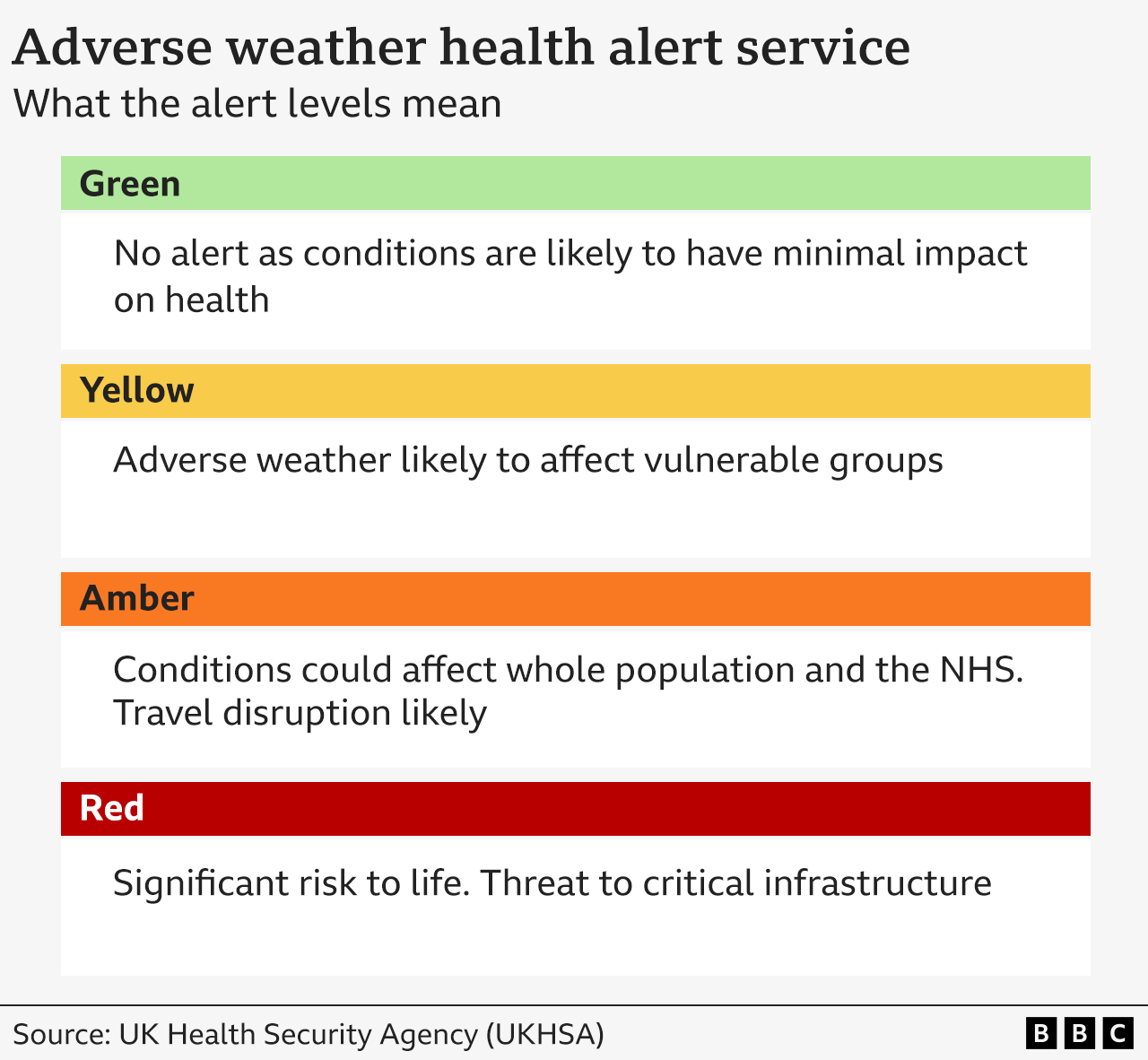How do cold weather health alerts work?

- Published
Amber cold health alerts have been issued for the North East and West of England, and Yorkshire and the Humber. A yellow cold alert is in place for the rest of England.
They will remain in place until 08:00 GMT on Saturday 22 November.
How does the weather health alert system work?
The weather alert service is run by the UK Health Security Agency (UKHSA) and the Met Office.
The alerts warn the public when high or low temperatures pose a potential risk to health.
Cold health alerts are issued between 1 November and 30 March, and heat health alerts are published between 1 June and 30 September.
As well as warning the public, the system sends guidance directly to NHS England, the government and healthcare professionals during periods of adverse weather.
Alerts are categorised according to severity and include:
headline weather conditions expected in the coming days
details of how weather conditions will affect each region
links to additional information, advice and guidance
The system was designed to help reduce illness and deaths during periods of extreme hot and cold weather.
What do the alert levels mean?
The level of alert is based on Met Office forecasts and data.
There are four levels ranging from green (least severe) to red (most severe):
Green
Green is the normal level, when advice is given on how people should prepare to respond if temperatures rise or fall.
Yellow
Yellow alerts are issued during periods of hot or cold weather that are only likely to affect those who are particularly vulnerable, for example the elderly, or those with existing health conditions.
Amber
Amber alerts are issued in situations that could potentially put the whole population at risk. The NHS may see increased demand on GPs and ambulances, for example.
Travel disruption is also likely.
Red
A red alert is the most severe.
It is issued in situations when hot or cold weather would be a significant risk to life, even for the healthy population, and could lead to failures of critical national infrastructure, such as power outages or roads and rail lines being closed.

What does cold weather do to the body?
Flu and certain other diseases that cause colds and sore throats spread more easily in the winter months. Pneumonia, when there is inflammation in the lungs because of an infection, is more common after cold weather.
Cases of norovirus - the winter vomiting bug - tend to rise too.
Prof Damian Bailey, from the University of South Wales, made a programme for BBC Radio 4's Inside Health about the effects of cold on the body.
Presenter James Gallagher spent 30 minutes in a room where the air temperature dropped from 21C to 10C.
During the experiment, the blood flow to his brain fell, his blood pressure and heart rate increased, the temperature of his extremities - arms, legs and head - dropped, and he took significantly longer to complete a series of puzzles.

Prof Bailey said 18C is the body's tipping point - below that and the body has to work hard to maintain its core temperature. That is one reason why heart attacks and strokes are more common in the winter months.
When it is not possible to keep rooms heated to 18C, he recommends wearing gloves, warm socks and a woolly hat, eating a higher carbohydrate diet and generating more body heat by moving around.